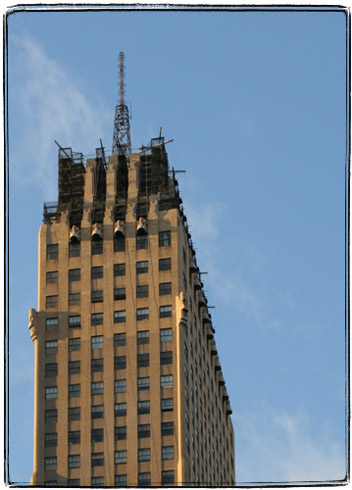October 2004 marks the 100th anniversary of the largest underground transit network in the world. Love it or hate it, if you’re a New Yorker, you can’t live without it: 3.5 million people ride the rails every day. The subway is as much a symbol of New York City as Central Park and the Statue of Liberty. Commemorating its centennial, this official publication presents an illustrated history of the architecture and design of the entire complex, from the interiors of the trains and the mosaic signage at the stations to the evolution of the token and the intricacy of the intertwined, rainbow-colored lines on the free, foldout map.
Produced with the New York City Transit Museum, Subway Style documents the aesthetic experience of the system through more than 250 exclusive pictures. The book includes newly commissioned color photographs of historic and contemporary station ornamentation as well as imagery from the Museum’s archives. The images span the full century, from the system’s inception in the early 1900s up to and including architectural renderings for the still-to-be-built Second Avenue line. AUTHOR BIO: The NEW YORK TRANSIT MUSEUM is one of only a handful of museums in the world dedicated to urban public transportation. The Museum’s collections of objects, documents, photographs, films, and historic rolling stock illustrate the story of mass transit’s critical role in the region’s economic and residential development since the beginning of the 20th century. The Transit Museum’s main facility is located in a decommissioned 1936 subway station in Brooklyn Heights, an ideal setting for the Museum’s 20 vintage subway and elevated cars, and wide-ranging educational programs for children and adults. A gallery annex in Grand Central Terminal presents changing exhibits relevant to the millions of commuters who use mass transit every day.
Photographer Andrew Garn has exhibited his work in galleries around New York City and across the country. His photographs are also held in numerous museum and private collections.
The Devil in the Details
Working most of your adult life in a cubicle is like being in sensory deprivation chamber. You start noticing more details. I took this series of pictures without a tripod, just walking around town with my long lens.
Looking at the steel eagles on the Chrysler Building up close, it’s easy to imagine yourself a superhero, standing on it with a cape billowing behind you.
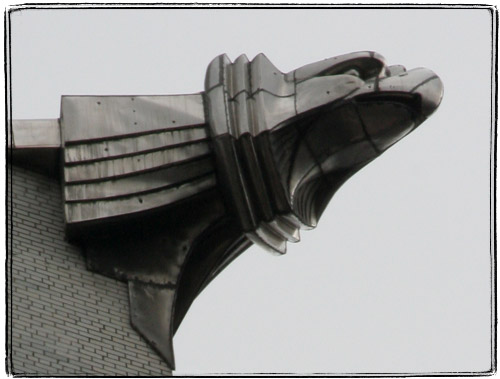
It’s a little harder with the eagles’ less popular neighbors – flying hubcaps.
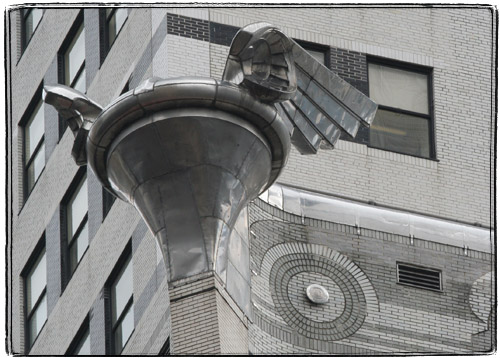
The decorations of the beautiful Art Deco Chanin Building are so very Lovecraftian. Tentacles, pentacles, tentacles with pentacles.
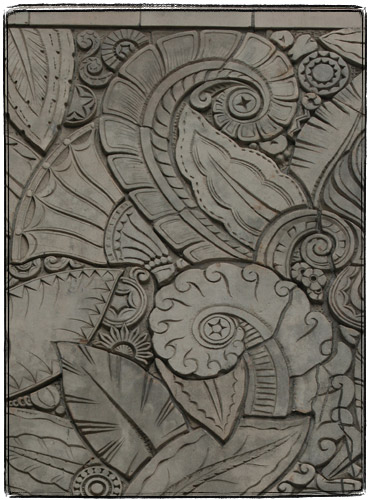
More tentacles and jellyfish on the copper parts.
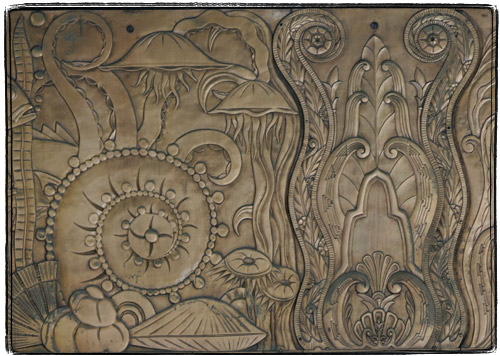
The fighting dragons. An allegory of retaliation or something?
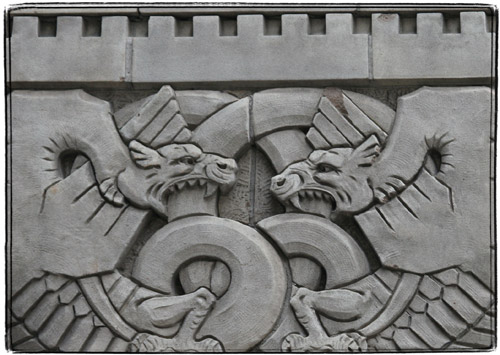
Minerva on the top of the Grand Central Terminal has a very modern look favored these days by Conde Nasties and the like. Must be cold up there.
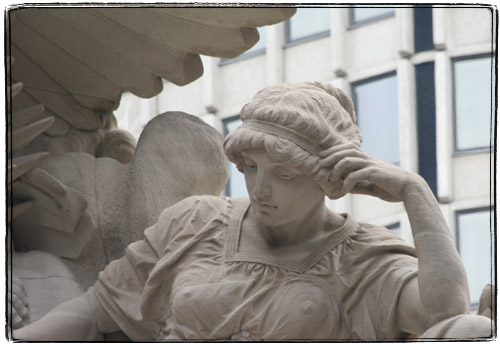
It’s pretty cool to see how cabbies order hot dogs without getting out of their Crown Victorias.
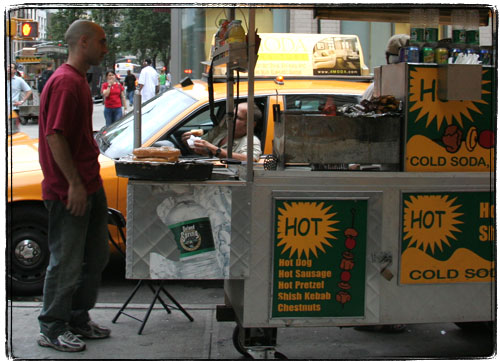
I hate graffiti, and especially train graffiti. That said, I must acknowledge that an infinitesimally small percentage of graffiti tags is actually cool. Here’s one that caught my attention. It looks like instead of the usual gobbledygook and gang symbols, this tagger painted “NYC” in a manner highly reminiscent of Japanese calligraphy. I still mind having it blocking my view, but I would not mind purchasing something like that on a scroll.

Ad:
These are my two favorite NYC photography books. “Drive by Shootings : Photographs by a New York Taxi Driver” is a collection of photographs by a taxi driver with a Yashica T4 from behind the wheel.
“New York Changing: Revisiting Berenice Abbott’s New York” is a collection of photographs of New York originally taken by Bernice Abbot in the thirties, and then retaken with the same camera, lenses and at the same angles by Douglas Levere in the nineties.
NYC Buildings You’ve Never Noticed : The Graybar Building
Graybar building is one of the bigger, yet lesser known New York City skyscrapers. Located at 420 Lexington Avenue, it leans against and over Grand Central Terminal. In fact, I walked by it many times thinking that it was a part of Grand Central.
The understated Art Deco design helps to hide the huge bulk of the building. Some of the sparse embellishments are striking and very unusual.
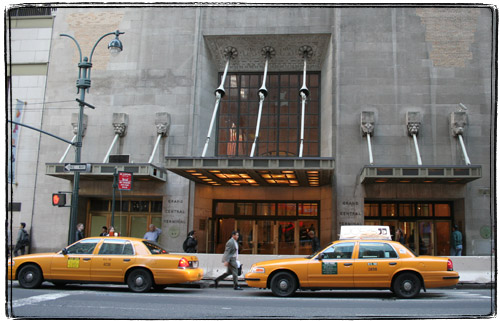
The cables that hold the rain canopy in place are in the shape of ship’s mooring ropes, complete with rats and anti-rat devices. I did not notice this at first, but the rosettes from which the ropes emanate are decorated with rat heads. Freaky, huh?
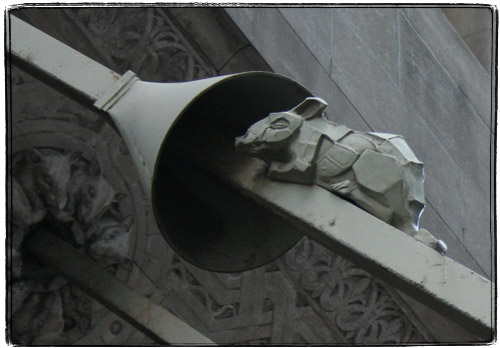
Bas relieves to the side of the entrances are rather conventional allegorical representations of communication – a dude holding an old-timey (but maybe slightly out of date in In 1927) phone with lightning bolts around his head and stuff and transportation – similar looking dude holding a truck. The other two relieves are of Deco-Assyrian looking Prometheus with fire.
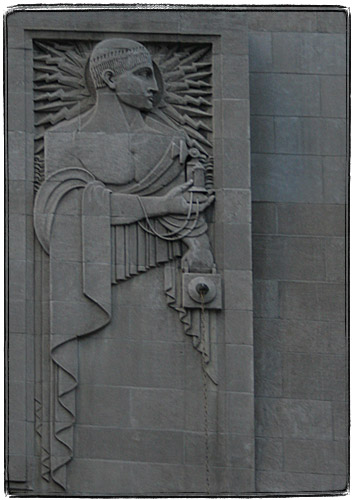
There’s an antenna at the top of the building. I could not find any information about it.
